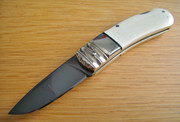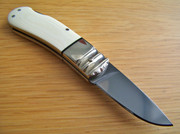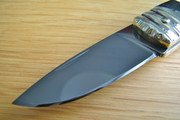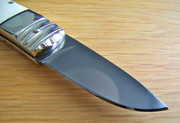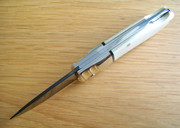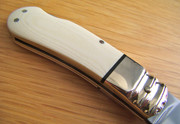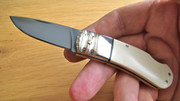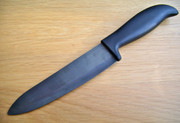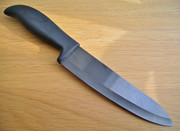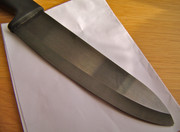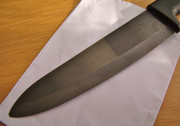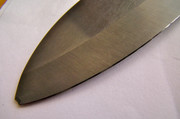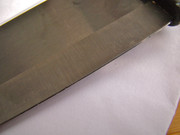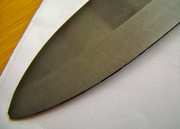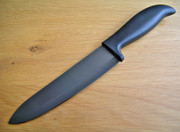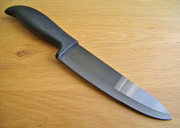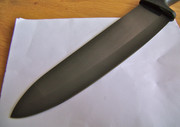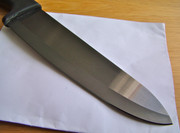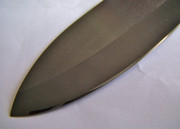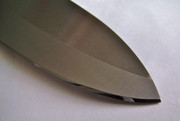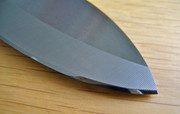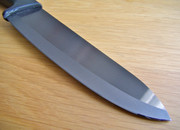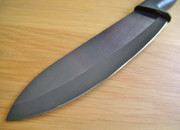The Spyderco 2013 Forum Knife is a reflection of both the deep tradition and commitment to innovation that characterize Spyderco.
It is based on the Native5, the latest evolution of one of our most popular US-made designs.
The full-flat-ground blade is machined from premium CPM S110V steel—an ultra-high-performance, state-of-the-art alloy that includes cobalt, niobium, molybdenum, vanadium, and almost three percent carbon.
Its handle is also highly evolved, featuring full skeletonized stainless steel liners, a stainless back spacer, and a meticulously crafted backlock mechanism that took literally years of R&D to perfect.
The handle is encased in green G-10 scales with a distinctive diamond-cut texture pattern and the liners, scales, and lockbar are all expertly hand sanded for an exceptional fit and finish.
The 2013 Forum Knife will be the first production knife to use this new handle material with its very unique texture.
A polished four-position hourglass clip completes the package, supporting tip-up and tip-down carry on both sides of the body and making the knife’s operation completely ambidextrous.
A shining example of the US factory’s craftsmanship, this unique limited-edition knife is laser engraved on the reverse side of the blade with “Spyderco Forum Knife 2013.”
Specs:
Closed Length: 4.0 (Inches) / 102 (mm)
Overall Length: 6.95 (Inches) / 177 (mm)
Blade Length: 2.95 (Inches) / 75 (mm)
Edge Length: 2.42 (Inches) / 61 (mm)
Blade Thickness: 0.125 (Inches) / 3.2 (mm)
Steel: CPM-S110V stainless
Hardness: +/- 63 HRC
Weight: 3.6 (Ounces) / 102 (Grams)
Grind: Full-flat
Edge Configuration: Plain
Lock Type: Back Lock
Handle: Green Diamond-Cut Textured G-10
R/L/Ambi: Ambi
Clip: 4-position
Origin: Golden, Colorado U.S.A. Earth
Datasheet: http://www.nsm-ny.com/files/CPM%20S110V.pdf



























































